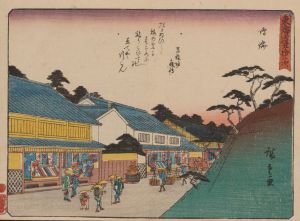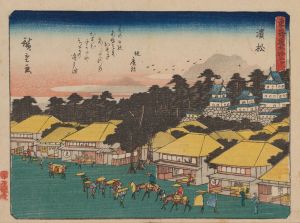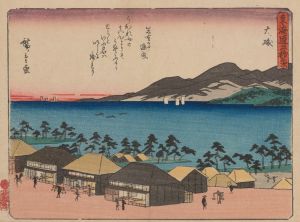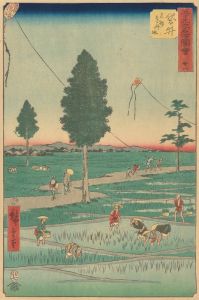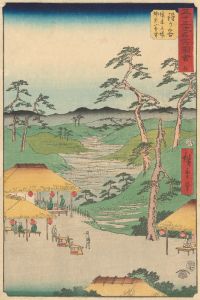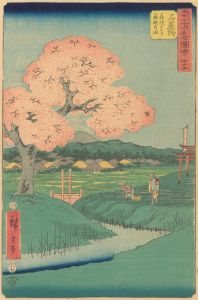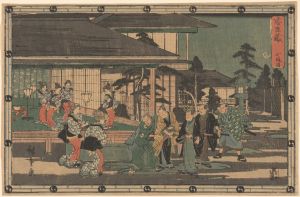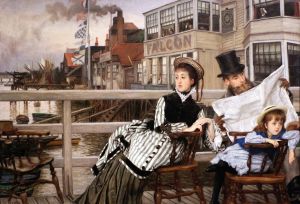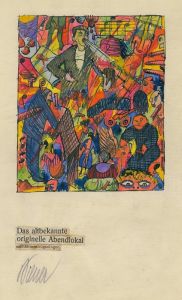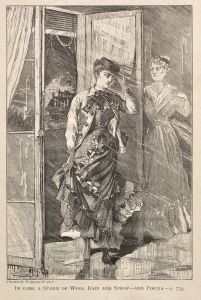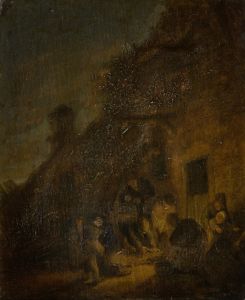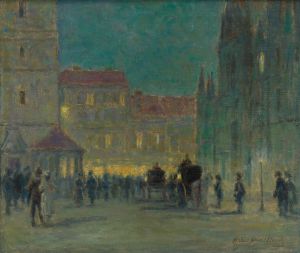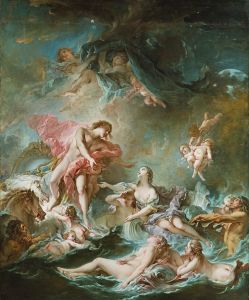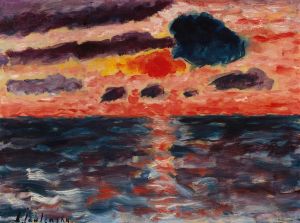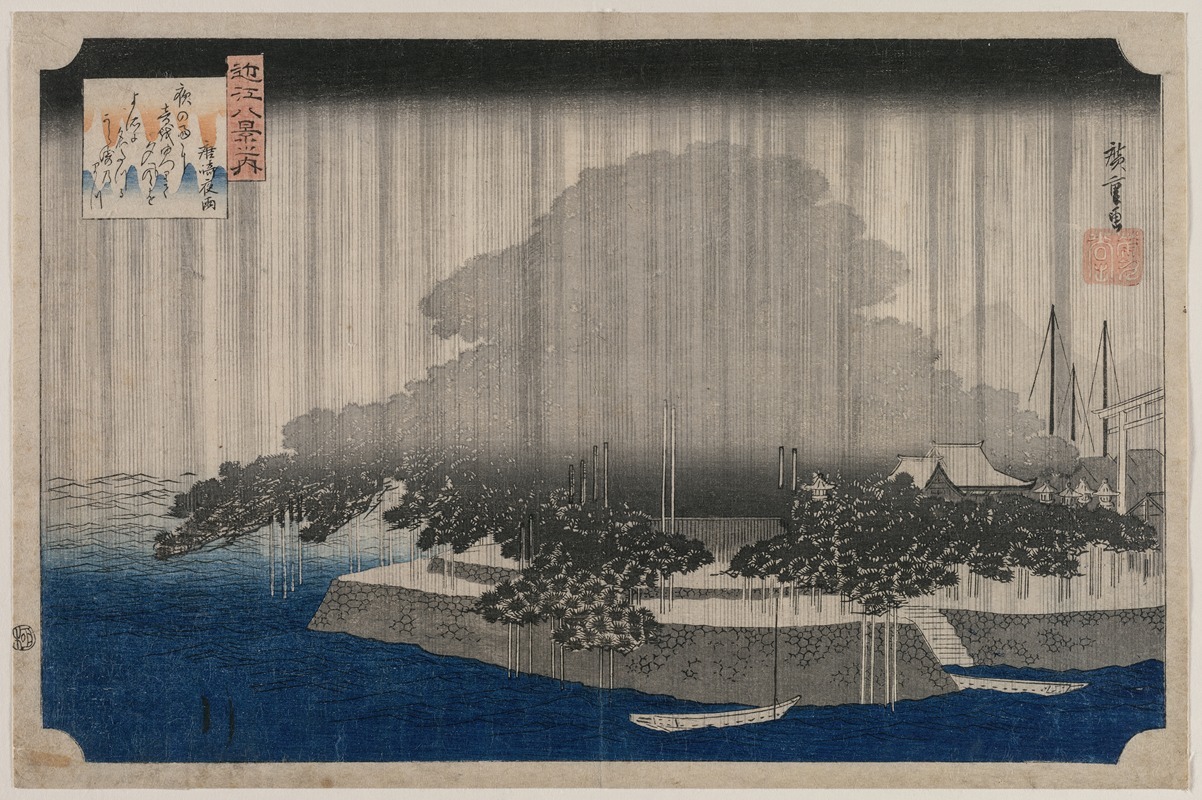
Night Rain at Karasaki, from the series Eight Views of Ōmi
A hand-painted replica of Andō Hiroshige’s masterpiece Night Rain at Karasaki, from the series Eight Views of Ōmi, meticulously crafted by professional artists to capture the true essence of the original. Each piece is created with museum-quality canvas and rare mineral pigments, carefully painted by experienced artists with delicate brushstrokes and rich, layered colors to perfectly recreate the texture of the original artwork. Unlike machine-printed reproductions, this hand-painted version brings the painting to life, infused with the artist’s emotions and skill in every stroke. Whether for personal collection or home decoration, it instantly elevates the artistic atmosphere of any space.
Night Rain at Karasaki, from the series Eight Views of Ōmi by Andō Hiroshige
"Night Rain at Karasaki" is a woodblock print created by the renowned Japanese ukiyo-e artist Andō Hiroshige (1797–1858). This artwork is part of Hiroshige's celebrated series titled Eight Views of Ōmi (Ōmi Hakkei), which depicts eight scenic locations around Lake Biwa (formerly known as Ōmi Province) in Japan. The series draws inspiration from the classical Chinese theme of the "Eight Views of Xiaoxiang," adapting it to a Japanese setting and aesthetic.
The print portrays a tranquil yet evocative scene of Karasaki, a location famous for its ancient pine tree near the shores of Lake Biwa. The pine tree, known as the Karasaki Pine (Karasaki no Matsu), was a well-known landmark and a subject of admiration in Japanese poetry and art. In this composition, Hiroshige captures the atmosphere of a rainy night, with raindrops falling diagonally across the image, a technique he often used to convey weather conditions. The tree's sprawling branches dominate the foreground, while the background features a serene view of the lake and distant mountains, shrouded in mist and darkness.
Hiroshige's use of color and line in this print exemplifies his mastery of the ukiyo-e style. The subdued palette, with shades of gray, green, and blue, enhances the mood of quiet introspection and harmony with nature. The diagonal lines of the rain and the soft gradations of color create a sense of depth and movement, drawing the viewer into the scene. The composition reflects Hiroshige's ability to evoke emotion and atmosphere through simplicity and balance.
The Eight Views of Ōmi series, including "Night Rain at Karasaki," was likely produced during the late Edo period (1603–1868), a time when landscape prints gained immense popularity in Japan. Hiroshige's works in this series are considered some of the finest examples of landscape art in the ukiyo-e tradition. They showcase his skill in capturing the beauty of Japan's natural scenery and his sensitivity to seasonal and atmospheric changes.
"Night Rain at Karasaki" remains an iconic example of Hiroshige's artistry and his contribution to the ukiyo-e genre. Today, it is admired for its poetic depiction of nature and its ability to transport viewers to a serene and timeless moment in Japanese history.





